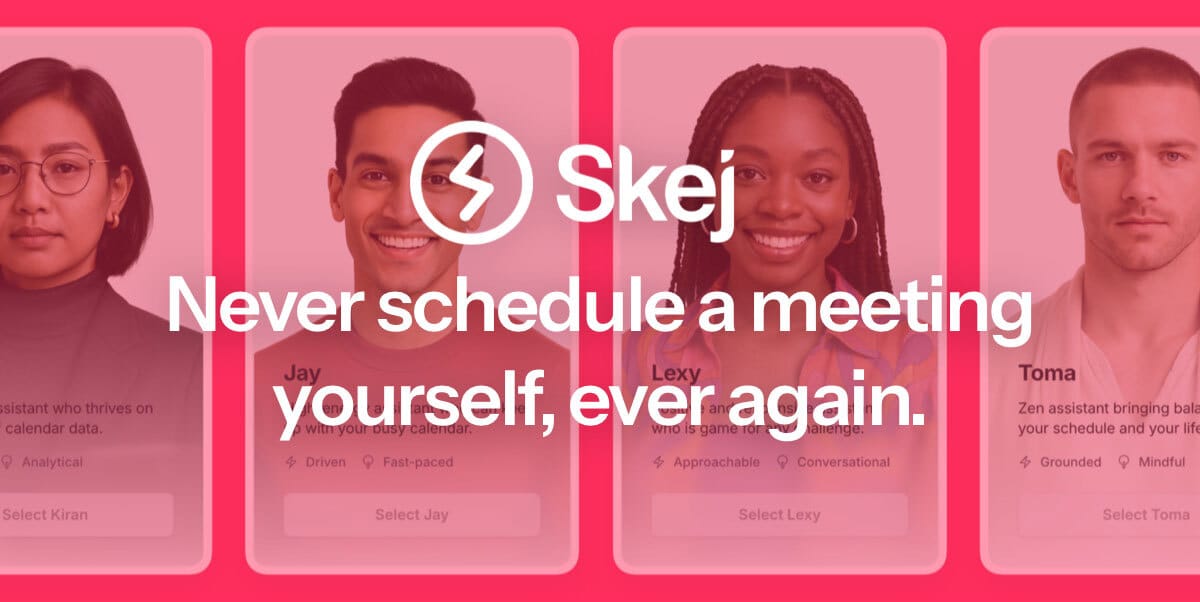- Tiny Big Spark
- Posts
- The Scalable Leader: How to Grow Teams Without Losing Speed or Sanity
The Scalable Leader: How to Grow Teams Without Losing Speed or Sanity
The proven blueprint for building clarity, quality, and culture as engineering organizations expand
THE SCALABLE LEADER
When Growth Feels Like Chaos and Opportunity at the Same Time
There’s a moment in every engineering organization where growth stops feeling exciting and starts feeling overwhelming. The team gets bigger, the stakes get higher, and the systems that worked at ten engineers suddenly fall apart at fifty. Slack threads get longer, decisions slow down, and suddenly the brightest people feel buried under meetings, expectations, and technical debt.
For someone like you — responsible, busy, and balancing countless priorities — this shift feels familiar. Growth often arrives disguised as chaos. But high-performing companies handle this moment very differently.
MarketBeat releases Top 10 Stocks to own report

While the crowd’s chasing yesterday’s headlines, the real money’s brewing in the shadows.
2025’s megatrends - AI’s takeover, consumer empires doubling down, aerial taxis rewriting travel - are already here.
And Wall Street’s too busy navel-gazing to notice.
Our 10 Stocks Set to Soar in 2025 report cracks the code on those megatrends, giving you the name and ticker of the companies at the forefront of each one.
MarketBeat’s analysts sifted the chaff to deliver these 10 picks…
And they could very well be your ticket to profits the masses will miss.
Free today, after that, it’s strictly for paid members.
Act now or watch from the sidelines later!
Across some of the fastest-moving organizations in the world — Google, Facebook, Netflix — the teams that scaled well didn’t simply hire more people or build more processes. They learned to scale with intention. And every scalable team shared three foundational principles:
Clear, structured goal-setting
Non-negotiable commitment to code quality
Deliberate, consistent cultural design
These aren’t abstract values. They are practical tools — tools that shape velocity, retention, and long-term health. Tools that determine whether a team grows into a resilient engineering organization… or collapses into technical entropy.
Here is the expanded, deeply detailed blueprint — the one used by some of the world’s most demanding engineering environments — distilled into something you can use, no matter the size of your team.
Tip for You: When everything starts feeling messy, don’t add more process. Start with clarity — clear goals, clear ownership, clear expectations. Clarity reduces noise more than rules ever will.

The Goal-Setting Blueprint That Actually Scales
The first signal that a team is growing too fast is when no one can articulate what really matters. Goals blur. Priorities multiply. Busywork expands. Productivity becomes an illusion. This is exactly why the strongest engineering cultures build around structured objective systems — not for bureaucracy, but for alignment.
The Google Method: Ambition Without Burnout
Google’s most effective practice was not the OKR framework itself — it was the mindset behind it:
70% is success. Not every objective should be easy. Not every plan should fit neatly into a quarter. Stretching the team slightly further than comfort is where innovation grows.
3–5 objectives per team. More objectives don’t equal more progress. The more you add, the less happens.
Layered alignment. Company goals set direction. Team OKRs define contribution. Individual OKRs are optional — not mandatory — because doubling tools (OKRs + Jira) creates unnecessary friction.
Weekly 15-minute reviews. No status theatre. Just clarity on movement, blockers, and priority shifts.
Every thriving engineering team understood that OKRs weren’t documents. They were decision filters.
The Netflix Method: Context Over Control
Netflix’s north-star approach gave teams ownership without chaos:
One defining metric per team.
When everything matters, nothing matters.
When one metric matters, progress becomes obvious.Quarterly business reviews grounded in data.
Not slide decks. Not storytelling. Just reality.The Keeper Test.
A simple, brutally honest calibration:
If someone left tomorrow, would you fight to keep them?
If not, something in the system is misaligned.
These approaches weren’t flashy. They were grounded in focus and simplicity — two qualities that teams lose the moment scale arrives.
Tip for You: Set one meaningful success metric for each team, not five. Watch how quickly confusion disappears and execution improves.
Meet your new assistant (who happens to be AI).
Skej is your new scheduling assistant. Whether it’s a coffee intro, a client check-in, or a last-minute reschedule, Skej is on it. Just CC Skej on your emails, and it takes care of everything:
Customize your assistant name, email, and personality
Easily manages time zones and locales
Works with Google, Outlook, Zoom, Slack, and Teams
Skej works 24/7 in over 100 languages
No apps to download or new tools to learn. You talk to Skej just like a real assistant, and Skej just… works! It’s like having a super-organized co-worker with you all day.
Code Quality: The One Standard That Can’t Bend
As teams grow, the biggest threat isn’t complexity — it’s inconsistency. The moment quality becomes optional, velocity dies under the weight of broken builds, surprise regressions, and fragile architecture.
The Facebook Standard: Code Quality as Culture
Facebook operated with ruthless clarity:
Nothing merges without review.
Every line gets seen by another engineer. No exceptions.Every file has an owner.
Accountability reduces ambiguity. Ambiguity breeds bugs.Automated testing gates everything.
Coverage expectations weren’t arbitrary. New code targeted 80% or more.
Automated checks ran constantly — increasingly powered by AI in modern workflows.Key health metrics remained visible and enforced:
Code review turnaround (<24 hrs)
Test coverage levels
Bug escape rate
Commit → deploy time
This wasn’t micromanagement. It was discipline — the kind that protects teams from future pain.
The Netflix Twist: Fail Early and Intentionally
Netflix tested their systems with chaos on purpose:
Chaos Monkey: kills instances at random to test resiliency.
Game Days: simulate outages to build confidence under stress.
Canary Deployments: let teams roll out risk to only 1% of users before full deployment.
These aren’t stunts. They’re guardrails. They foster engineering maturity faster than documentation ever could.
Tip for You: Automate one quality check this month — code review reminders, test gating, linting, deployment verification. Small automation removes massive friction as you grow.
Proton Mail gives you a clutter-free space to read your newsletters — no tracking, no spam, no tabs.
Culture as the Scalability Engine
A team will copy its leader’s energy, not their processes. That’s why the strongest engineering orgs treat culture as architecture — designed intentionally, not allowed to form randomly.
Google: Structured Freedom Fuels Innovation
Google’s “20% time” succeeded because it gave engineers room to experiment safely.
Operationalized, this looked like:
Innovation Fridays once per month
Quarterly Hackathons with real rewards
Internal Tech Talks to spread best practices and unlock hidden talent
This kept engineers engaged, curious, and willing to take calculated risks.
Facebook: Bootcamp for Engineering Identity
Facebook prevented early misplacements by giving new engineers 6 weeks of exploration:
Tools mastery in weeks 1–2
Bug fixing in real production code weeks 3–4
Team selection weeks 5–6
People stayed longer because they chose their environment instead of being assigned into one blindly.
Netflix: High Talent Density, High Trust
Netflix created clarity through expectation:
Pay top of market
Expect professional behavior without babysitting
Remove politics through skip-level conversations
Ensure honesty through continuous 360 feedback
Culture wasn’t a poster — it was a system of trust, performance, and transparency.
Tip for You: Pick one cultural ritual — tech talks, demos, hack afternoons, feedback cycles — and make it consistent. Culture grows from repetition, not slogans.
Find out why 100K+ engineers read The Code twice a week.
That engineer who always knows what's next? This is their secret.
Here's how you can get ahead too:
Sign up for The Code - tech newsletter read by 100K+ engineers
Get latest tech news, top research papers & resources
Become 10X more valuable
What Actually Scales (and What Absolutely Does Not)
By observing organizations at scale, patterns become impossible to ignore.
What never scales:
Hero culture
Manual deployment and testing
Undocumented systems
Tribal knowledge
Ad-hoc communication
These create bottlenecks, burnout, and brittle architecture.
What always scales:
Clear ownership
Automated pipelines
Documented architecture
Structured goal-setting
Healthy on-call processes
Transparent feedback loops
The boring things are the durable things.
A Practical Year-Long Scaling Model
Months 1–3: Establish the foundation
Code reviews
CI/CD
Monitoring
Team boundaries and ownership
Months 4–6: Refine the processes
OKRs
DORA metrics
On-call redesign
Retrospectives
Months 7–12: Strengthen culture and innovation
Hackathons
Internal mobility
Career frameworks
Cross-team collaboration
Scaling isn’t a single playbook. It’s a disciplined commitment to clarity, quality, and culture — revisited constantly as the team grows.
The strongest engineering organizations aren’t fearless. They simply channel their fear into structure and their ambition into systems. And with the right foundation, your own team can do the same — without sacrificing morale, momentum, or sanity along the way.
Tip for You: Your team doesn’t need more tools or more rules. It needs consistency. Small, reliable systems beat complicated processes every time.
What’s your next spark? A new platform engineering skill? A bold pitch? A team ready to rise? Share your ideas or challenges at Tiny Big Spark. Let’s build your pyramid—together.
That’s it!
Keep innovating and stay inspired!
If you think your colleagues and friends would find this content valuable, we’d love it if you shared our newsletter with them!
PROMO CONTENT
Can email newsletters make money?
With the world becoming increasingly digital, this question will be on the minds of millions of people looking for new income streams in 2025.
The answer is—Absolutely!
That’s it for this episode!
Thank you for taking the time to read today’s email! Your support allows me to send out this newsletter for free every day.
What do you think for today’s episode? Please provide your feedback in the poll below.
How would you rate today's newsletter? |
Share the newsletter with your friends and colleagues if you find it valuable.
Disclaimer: The "Tiny Big Spark" newsletter is for informational and educational purposes only, not a substitute for professional advice, including financial, legal, medical, or technical. We strive for accuracy but make no guarantees about the completeness or reliability of the information provided. Any reliance on this information is at your own risk. The views expressed are those of the authors and do not reflect any organization's official position. This newsletter may link to external sites we don't control; we do not endorse their content. We are not liable for any losses or damages from using this information.





Reply